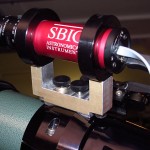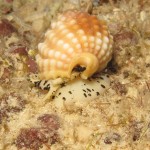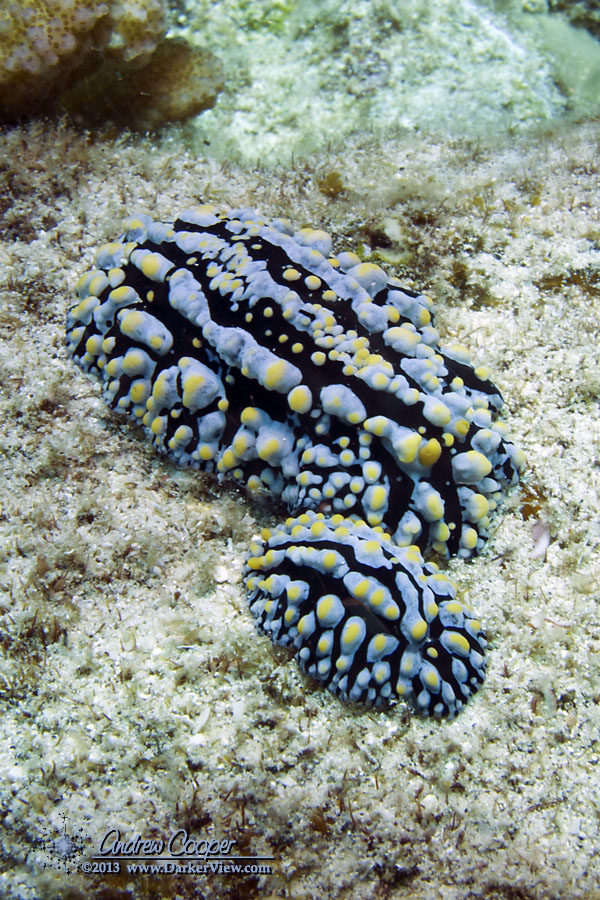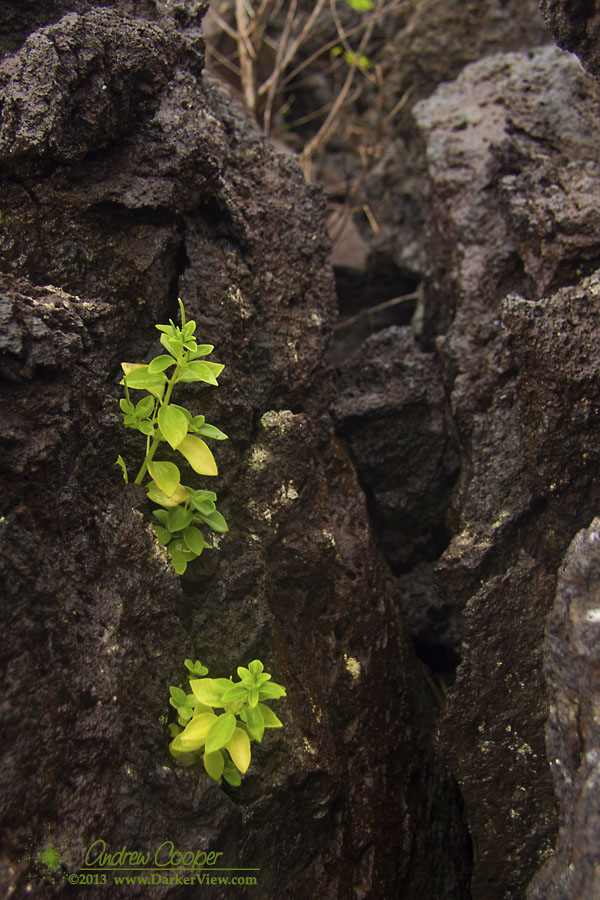Today Mercury reaches maximum elongation, the furthest point it will reach from the Sun in our sky and the highest it will be above the sunset for this evening apparition. The planet is easily visible as a bright, starlike object about 24° above the setting Sun as twilight begins. Over the next couple weeks Mercury will slide back into the sunset, heading for inferior conjunction on July 9th.
Life on the Rock
TeleVue-76 to STi Autoguider Mount
A rigid mount to adapt the TeleVue-76 to the SBIG STi autoguider? I need such a solution, I have both of these bits of kit that need to be wed together for the minimal astrophoto setup. As I am unlikely to find such a part commercially, I would have to make it myself.
Another couple hours in the machine shop were in order, another small pile of aluminum chips. This actually went pretty quickly, these are easy cuts to make. No tapping is required, the four holes are simply drilled through. The two hours included design and cleanup for a quick project.


The TV-76 has a rather non-standard mounting point on top for accessories like this. A pair of #10-32 threaded holes, 0.75″ apart and located in a slot 0.625″ wide milled into the mounting ring. This seems simple enough. An adapter made for the TV-76 should work with any of the TeleVue refractors that use this mounting. Another concern is that the solution must also be very rigid, any flexure between the autoguider and the telescope will result in smeared stars.
The design assumes that you have the additional guiding kit sold by SBIG for the STi autoguider. This provides the mounting rings that clamp the camera body.
The hardware required will be two ¼-20 x 1½” socket head cap screws, and two #10-32 x 1″ socket head cap screws. A pair of plastic press on caps convert the #10 screws to knobs. All parts you can find in a neighborhood hardware store.
The mount is 1.5″ high to set the autoguider away from the main OTA, as to not encounter any vignetting. This also allows space to get fingers onto the mounting knobs. The dimensions are chosen so that standard screws protrude by just the right amount. I messed this up on the one I made, machining the center to far. As a result a few washers are needed for the screws that mate with the refractor. This is fixed in the mechanical drawing.
To co-boresight the TV-76 with the autoguider it was necessary to slip a 1/4″ washer between the mount and the rear ring as a shim. With that in place the same object is centered in both fields of view. The STi has a 2.7° x 2.2° field when used with the 100mm lens supplied in the SBIG accessory kit. With this wide field of view it also serves as a finder to locate and frame the photographic target.
It assembles nicely, a good start. The true test will be the quality of the images produced by the rig.
UCI Scientists Size Up Universe’s Most Lightweight Dwarf Galaxy with Keck Observatory
W. M. Keck Observatory press release…
The least massive galaxy in the known universe has been measured by UC Irvine scientists, clocking in at just 1,000 or so stars with a bit of dark matter holding them together.

“Finding a galaxy as tiny as Segue 2 is like discovering an elephant smaller than a mouse,” said UC Irvine cosmologist James Bullock, co-author of the paper. Astronomers have been searching for years for this type of dwarf galaxy, long predicted to be swarming around the Milky Way. Their inability to find any, he said, “has been a major puzzle, suggesting that perhaps our theoretical understanding of structure formation in the universe was flawed in a serious way.”
Postcard from the Reef – Different Occupants
Snails move at a surprising speed underwater, much faster than their terrestrial counterparts. This shell was moving much to fast even for a marine snail. A hermit crab, of course. The shell was familiar, I had photographed a snail wearing the same shell a few mere minutes earlier. The hermit crab was using a basket snail shell.


In the course of identifying the hermit crab I was surprised to learn it was an anemone crab. These usually host an anemone or three on their shells. This crab had none. A new shell? No time yet to recruit the usual anemone? It was fairly small for the species, perhaps a young example.
Sticky Worm
It began, as all these things do, with a phone call from Liz…
“It’s stuck”
“What is stuck?”
“SFP won’t move in K2AO.”
“Do not try to move it any further, I am up tomorrow for SegEx, I will go look at it.”

SFP is different, it can crash into the rotator if it gets lost. There is no real way to fix this issue, it has to be this way. SFP stands for Simulator Fiber Positioner, an artificial star created with a optical fiber. Placing the tip of the fiber at the telescope focus creates a bright dot of light that we can use to align and calibrate the AO system. The three axis stage can move the fiber into the light path and accurately position it just where you need it for system tests. There is also a diagonal mirror used to inject light from the telescope simulator and the spectral calibration source mounted atop the simulator.
The Moon, Mercury and Venus
This evening the Moon will join the ongoing dance of planets in the sunset. A very thin crescent Moon will be 13° above the horizon at sunset and 6° below and south of the brilliant Venus. 5° above Venus will be Mercury notably dimmer at only 0.4 magnitude.
Tomorrow the Moon will be a bit higher and show a little more crescent at 6% illuminated. It will be above Venus and about the same elevation as Mercury, if 7° further to the south.
Jupiter is still present, but probably too low into the sunset to spot at only 6° from the setting Sun. Maybe with perfect conditions?
New Moon
Postcard from the Reef – Nudi Porn
Yes, I occasionally publish porn… Nudibranch porn.
Search engines must have fun with nudis. Just consider the website Nudi Pixel. A great website, I often use the photos to check my identification of a species. How many surfers hit upon the site looking for something totally different?

International Team on Keck Observatory Strengthens Big Bang Theory
W. M. Keck Observatory press release…
An international team of scientists using the most powerful telescope on Earth has discovered the moments just after the Big Bang happened more like the theory predicts, eliminating a significant discrepancy that troubled physicists for two decades. The discovery will be published in the international journal Astronomy & Astrophysics on June 6.

The team, led by Karin Lind of the University of Cambridge, has proven the decades-old inventory relied on lower quality observational data with analysis using several simplifications that resulted in spurious detections of lithium isotopes.
Continue reading “International Team on Keck Observatory Strengthens Big Bang Theory”


